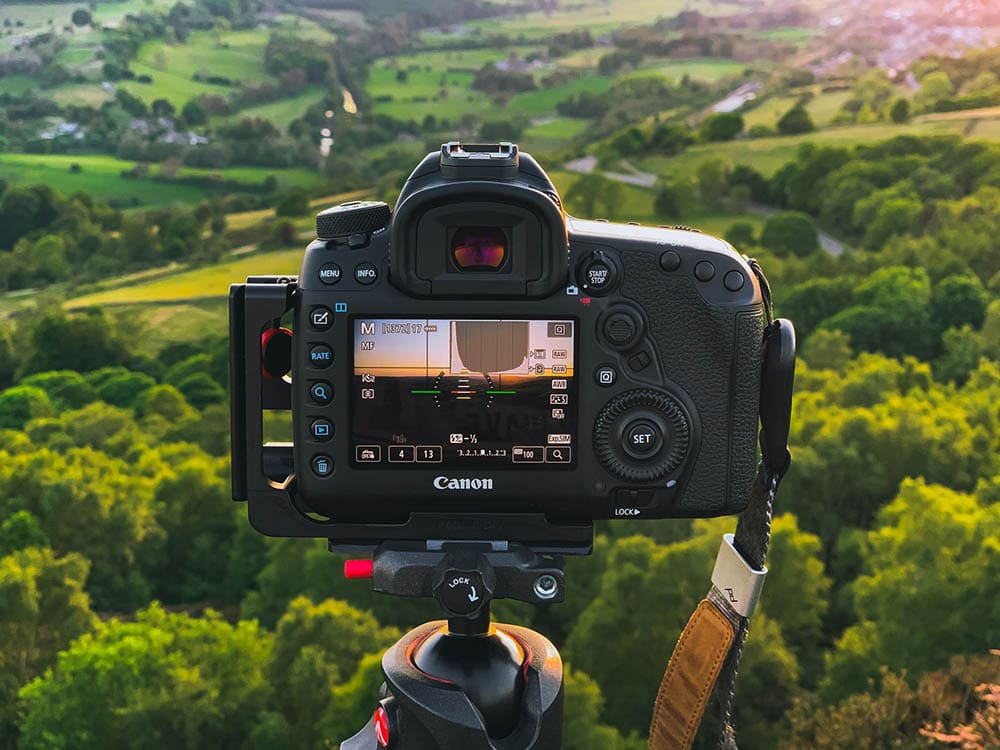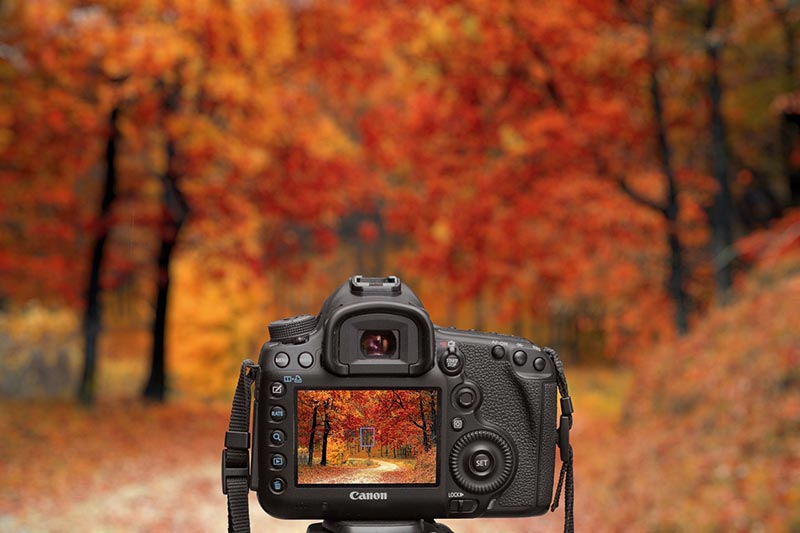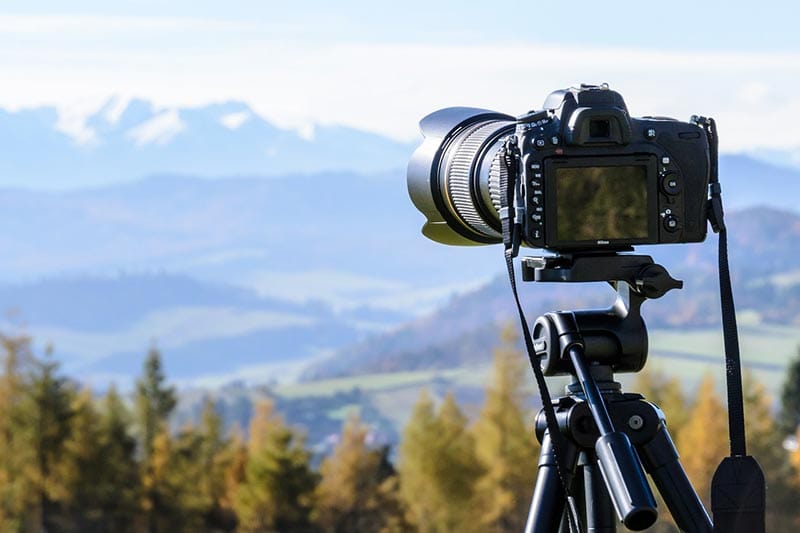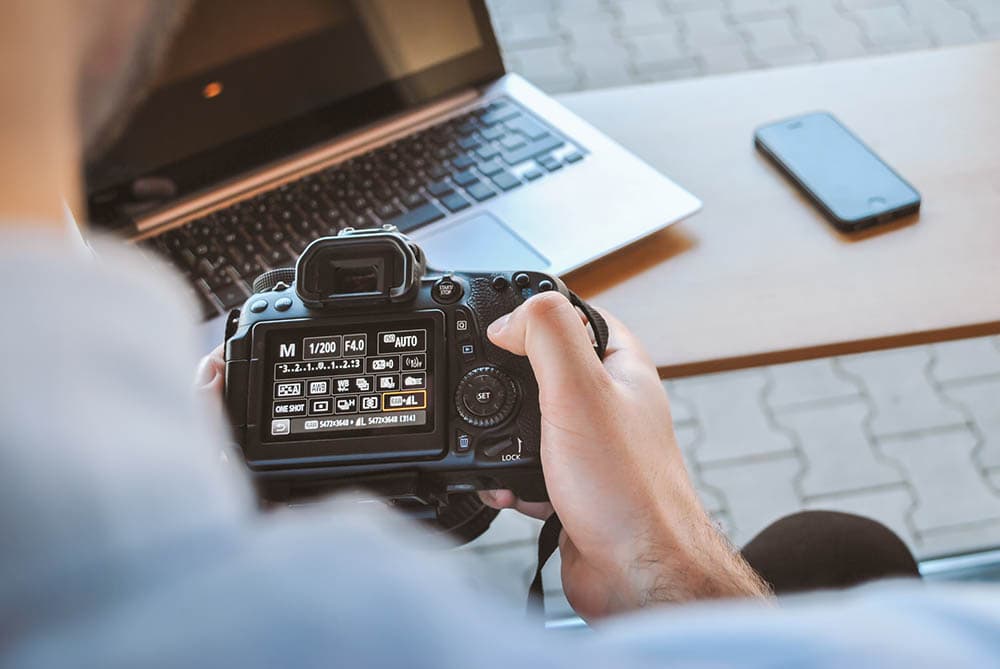What Is White Balance? Photography Basics Explained
Last Updated on

With all the advancements in modern photography, including the outstanding automatic adjustment features, many people don’t understand photography basics. One of those basics is white balance.
If you’ve ever taken a picture and noticed that the subject is yellow or bluer than it should be, it’s because the white balance is off. This has everything to do with the color temperature of different objects.
If all this sounds a little confusing to you, don’t worry, we break it all down here.

How Does It Work?
When you’re looking at various objects, you know how they’re supposed to look. Our brains adjust most images to a high noon-like appearance, even if the colors of the actual world are different.
The brain compensates for the different lighting conditions of the world and automatically adjusts them to give you an image with the appropriate white balance.
There’s a simple experiment that you can try to see this effect for yourself. Get a pair of yellow-lens glasses, and hang out in an area with a large amount of white. Ideal areas are a white room or a snow-covered area. When you put the glasses on, you’ll notice that everything has a bit of a yellow tinge from the lenses. Leave the glasses on for a while, then take them off.
You’ll find that all the white in the room now has a blue tint to it that wasn’t there before. Your eyes adjusted to the yellow lens, and now that you have them off, it’s overcompensating for the white that you’re seeing. Soon, it’ll shift back, and you’ll see everything as the pearly white that you’ve come to expect!
But while our eyes and brains do this for us automatically, cameras struggle a bit more. Without a sensor telling the camera how to adjust the image, the picture will seem off when you look at it.
It might appear a bit more orange or blue, depending on the actual lighting of the area. But just because the color temperature is there, that doesn’t mean it’s how you want to capture it.
Modern cameras automatically adjust this color temperature to give you results that look more like what you’d expect. But if you’re willing to dive into manual settings adjustments, you can start to customize your images to get the exact balance that you want, not the automatic setting.

What Are the Different Types of White Balance?
White balance is a single feature that you need to account for when you’re taking photographs, but there are multiple different ways that it can affect your photos.
The first is if the light is warmer than the white balance, it puts more of an orange tinge in the photograph. This is common with incandescent bulbs, meaning it’s more likely that you’ll deal with an orange tinge in your photographs if you’re taking indoor photographs.
If you’re taking photographs outside, you’ll likely have a blue tinge because of the higher amount of direct sunlight. However, it’s important to note that this is also what will happen if the auto-white balance isn’t working at all.
But if it’s overcompensating for the light and overcorrecting, you could deal with the opposite color showing up too much for the situation.
No matter what you’re dealing with, the best way to fix the problem is to simply override the auto-white balance and set the adjustment yourself. Now that you know a bit more about how it works, you’ll know what way to adjust the photo, whether you’re getting too much of a blue or an orange tint in your photo.
Where Is It Used?
Every digital camera that you’re using automatically adjusts for white balance. Otherwise, any photograph that you take won’t have the look that you want.
If you’re trying to adjust the white balance yourself, you can use it in many different settings. But it’s best to know what you’re doing here; otherwise, you could adjust the white balance the wrong way and make the problem even worse.
Not only does a digital camera have a white balance, but your own eyes and brain also do it! So, where is white balance used? Just about everywhere!

Advantages of White Balance
The advantage of an automatic white balance is clear: It makes the image look like we’d expect to see it. Otherwise, digital cameras would take pictures that don’t line up with what we’re seeing, and that’s not typically what we want when we pull out a camera.
It’s a great tool that is inside our camera even if we don’t realize what it’s doing when it’s doing it.
Disadvantages of White Balance
The only real disadvantage of an automatic white balance is if you’re trying to capture an image with different light hues than what’s actually there. This is common with nighttime photographs when you’re trying to make everything look a little brighter than it is.
For these photos, you might want to change the settings to a direct sunlight mode, which will give everything more of a red cast, since it’s overcompensating.

Frequently Asked Questions (FAQs)
White balance is something that most people typically take for granted. So, when you start to dive into the details, it’s normal to have a few questions. That’s why we did our best to address commonly asked questions about white balance for you here.
How Do You Manually Adjust White Balance?
It all depends on your camera, but you need to get into the settings. This is something that you can do with most DSLR or mirrorless cameras, but not every cellphone or compact camera.
Once you’re in the settings, you should see a setting that says, “White Balance” or “WB.” It’s typically on auto, but if you click on it, you can adjust it yourself. You can also choose to adjust the white balance after the fact with photo-editing software.

What Color Temperature Is Best for Photography?
When you’re picking out a color temperature for your photography, you generally want a white or warm light. The closer that you can get to white light, the better, but if you have to pick between a cool light or a warm light, warm light is typically a bit easier to work with.
What Should You Set Your White Balance To?
It depends on what you’re trying to photograph. While there are times that you want different white balances, the following settings are good starting points.
| Photography Setting | Recommended White Balance |
| Daylight | 5,600 Kelvin |
| Cloudy Days | 6,000 Kelvin |
| Shaded Conditions | 7,000 Kelvin |
| Nighttime Photography | 3,500 Kelvin |
| Tungsten Lighting | 3,200 Kelvin |
| Fluorescent Lighting | 4,000 Kelvin |
| When Using Flash | 5,500 Kelvin |

Final Thoughts
If you’re trying to take better pictures, understanding and mastering white balance is an ideal place to start. The wrong white balance can significantly degrade your photographs. Customizing the white balance can be a great way to set your pictures apart.
So, go ahead and experiment to see how different white balances affect your photos. If you have the right photo-editing software, you don’t even need to pull out the camera to do it. Simply go in and see how different white balance settings affect the photograph!
Featured Image Credit: Ben Griffiths, Unsplash
About the Author Robert Sparks
Robert’s obsession with all things optical started early in life, when his optician father would bring home prototypes for Robert to play with. Nowadays, Robert is dedicated to helping others find the right optics for their needs. His hobbies include astronomy, astrophysics, and model building. Originally from Newark, NJ, he resides in Santa Fe, New Mexico, where the nighttime skies are filled with glittering stars.
Related Articles:
What Is the Best Binocular Magnification for Hunting? Optical Features Explained
How to Clean a Refractor Telescope: Step-by-Step Guide
How to Clean a Telescope Eyepiece: Step-by-Step Guide
How to Clean a Rifle Scope: 8 Expert Tips
Monocular vs Telescope: Differences Explained (With Pictures)
What Is a Monocular Used For? 8 Common Functions
How to Clean a Telescope Mirror: 8 Expert Tips
Brightfield vs Phase Contrast Microscopy: The Differences Explained
